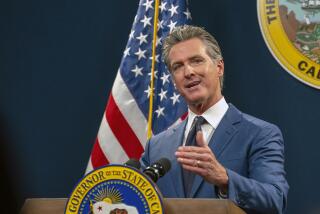The FDA’s Silicone Trap
You could picture this ritual taking place all over Southern California on Tuesday morning: a woman sits down at the breakfast table to eat her Wheaties and read the paper. But she doesn’t get very far. There, on Page 1, is the story she has feared the most.
The government has finally and officially admitted that silicone breast implants may be dangerous. After 30 years. As a result of the findings, doctors are asked to stop using implants immediately.
The ban is temporary, the story says. For now, at least. Government officials refer to “new concerns” that are being “evaluated.” They decline to elaborate.
The woman puts down the paper. The Wheaties sit in their bowl. A small voice inside her says to calm down, tells her that she knew this story was coming.
But the small voice does not succeed.
No one knows exactly how many times this ritual was repeated in Southern California. Of the 2 million women nationwide who have undergone breast implants, maybe half a million live here. Maybe more. In sheer numbers, no other region comes close.
As of Monday, none of those women could look to the future in quite the same way. Perhaps the “new concerns” will evaporate. Perhaps they will turn into a medical nightmare. As of now, their only option is to wait and worry.
The question for today: who led women into this trap?
There are plenty of nominees. The doctors who dismissed the side effects, smoothly ushering their clients into the cutting room for a one-hour, $3,000 procedure. The manufacturers, who chose to ask no questions about their product and thus carried forward the best tradition of the tobacco and asbestos industries.
But let me finger the government, now trying hard to portray itself as the white knight of this affair. How did it come to pass that the Food and Drug Administration waited 30 years to make a serious inquiry about a chemical product being inserted into the human body?
On Monday the FDA sought to shift the blame for this failure onto the manufacturers. FDA Commissioner David A. Kessler made much of the fact that it was the companies’ responsibility, not the government’s, to conduct studies establishing the safety of their product. This they have not done, Kessler said.
Even today, he went on, no one knows how often the implants turn as hard as oranges from excessive scar formation. No one knows how often the envelopes rupture and spill silicone gel into the body. And no one knows whether the silicone can cause cancer or other, arthritis-like diseases.
True enough. But Congress gave the FDA authority to demand such answers from the companies back in 1976. To save you from doing the arithmetic, that was 16 years ago. What was the FDA doing all those years? Mostly issuing bland reassurances about implants, that’s what. Saying there was no evidence of serious problems.
It’s the kind of behavior that has become common at the FDA. In one year, the paucity of scientific evidence is used to dismiss potential problems. In the next, the same paucity is hauled out to pillory the manufacturers. A neat trick.
And while we’re flailing away at the FDA, here’s one more thing: Why is it that only the government can get away with the cruel twist that was employed by the FDA on Monday? I’m talking about Commissioner Kessler’s reference to the disturbing “new concerns” that brought on the ban, and then his refusal to describe--even in the most generic terms--the nature of those concerns.
Are these cancer concerns? Something in the autoimmune category? Something worse? Kessler said he was sworn to silence because the “new concerns” emerged from a court case that has been sealed by a judge.
Criminy. Here we’ve got damning evidence about silicone that could affect the lives of 2 million women, and that evidence is unavailable for scrutiny by anyone except--presumably--the FDA because some second-level judge has agreed to protect a litigant.
Perhaps you see what I mean. This is the kind of government performance that makes people wonder why they pay taxes.
And meanwhile, the silicone-implanted women wait. The FDA has promised a new round of announcements in 45 days when the “new concerns” have been evaluated. Maybe it will mean the exoneration of silicone, and the end of worry.
But don’t count on it.






